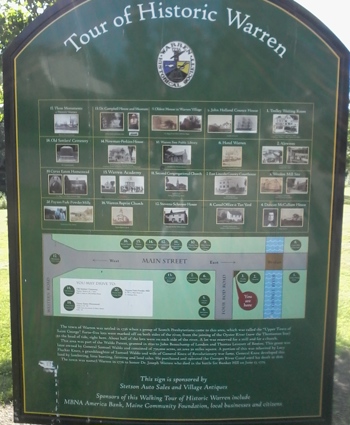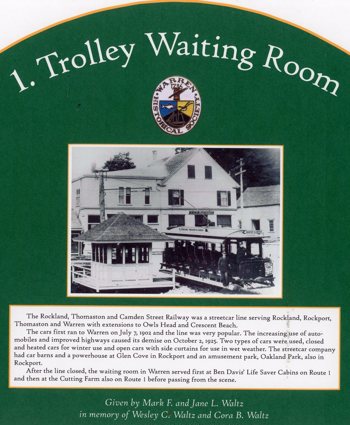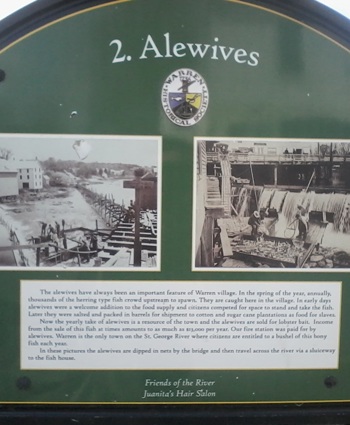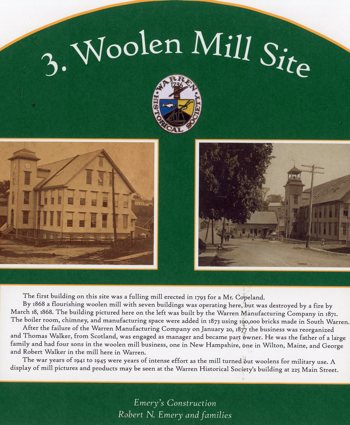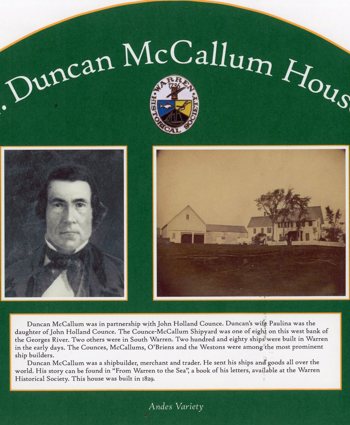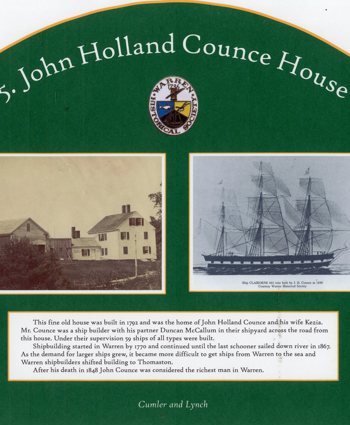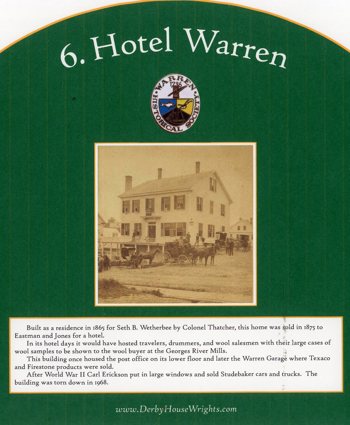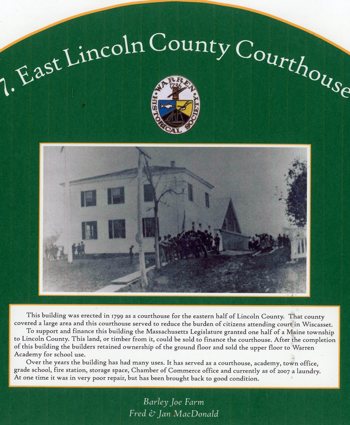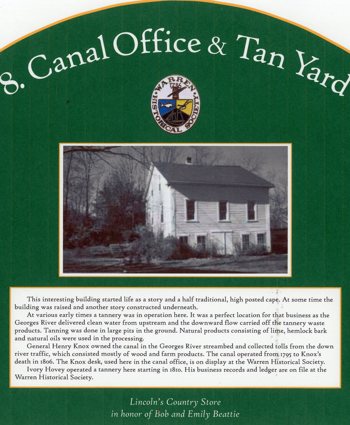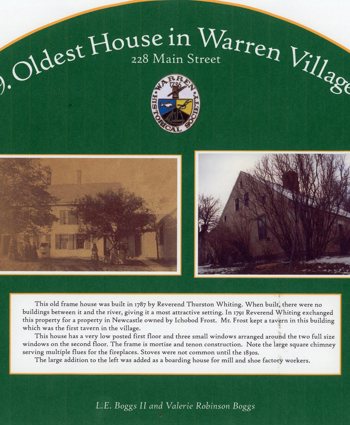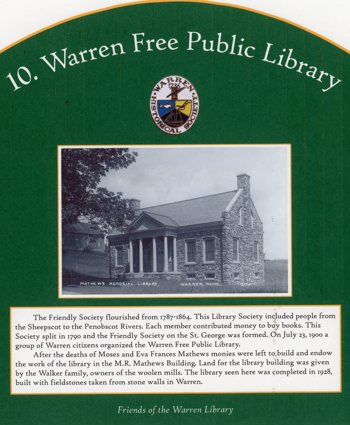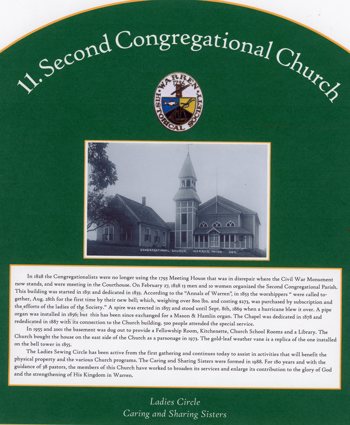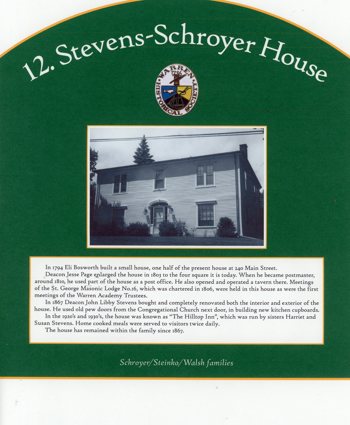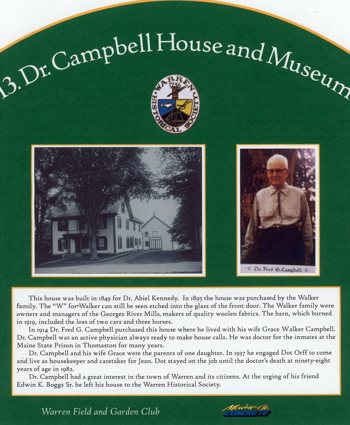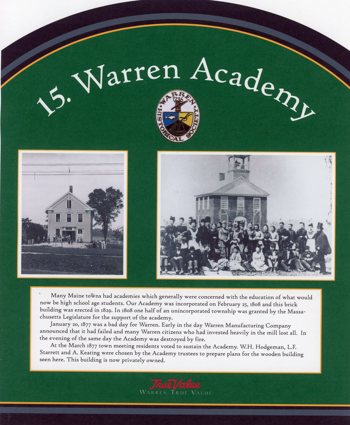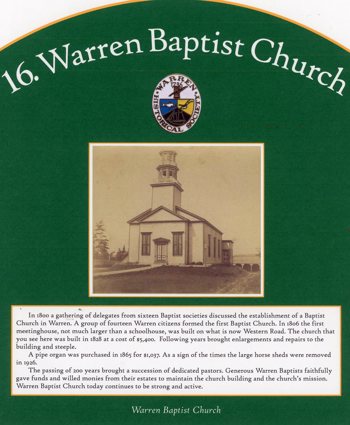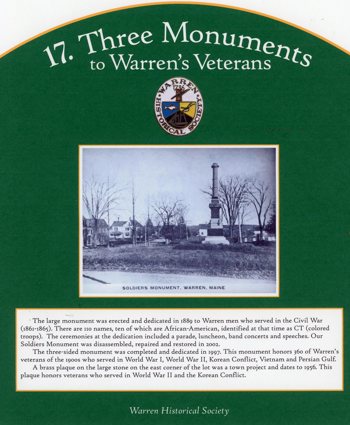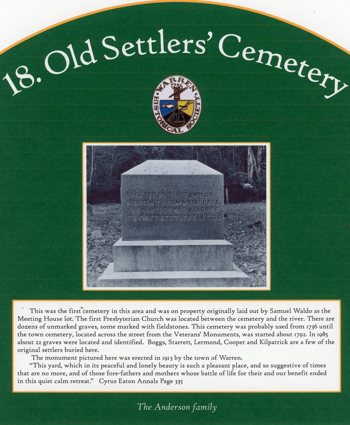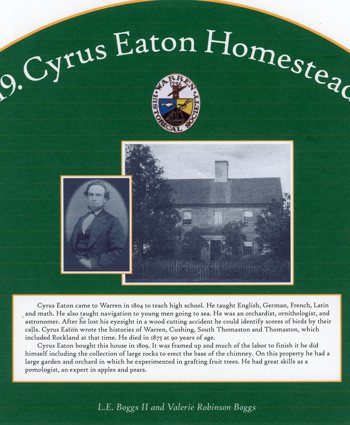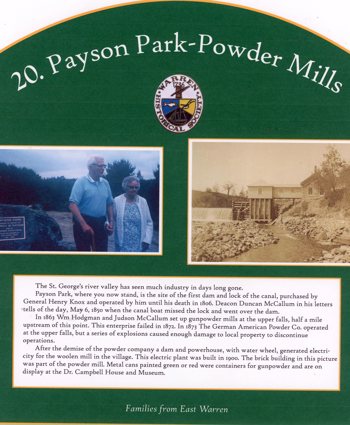Walking Tour of Warren Village
The town of Warren was settled in 1736 when a group of Scots-Irish Presbyterians came to this area, which was called the Upper Town of Saint George. This area was part of the Waldo Patent, granted in 1630 to John Beauchamp of London and Thomas Leverett of Boston. This grant was later owned by General Samuel Waldo and consisted of 750,000 acres, an area 30 miles square. Forty-five lots were marked off on both sides of the river from the joining of the Oyster River (now the Thomaston town line) to the head of tide, right here. About half of the lots were on each side of the river. Samuel Waldo agreed “to lay out good and commodious highways, build a meeting house at his own expense,” give a lot to the minister, one for the church, one for the first school, and two for a mill. Annals, p. 55.
A portion of the Waldo Patent was inherited by Lucy Flucker Knox, a granddaughter of Samuel Waldo and wife of General Henry Knox of Revolutionary fame. General Knox developed the land by lumbering, lime burning, farming, and land sales. He purchased and operated the Georges River Canal until his death in 1806.
The town was named Warren at its incorporation in 1776 to honor Dr. Joseph Warren who died in the Battle of Bunker Hill on June 17, 1775
